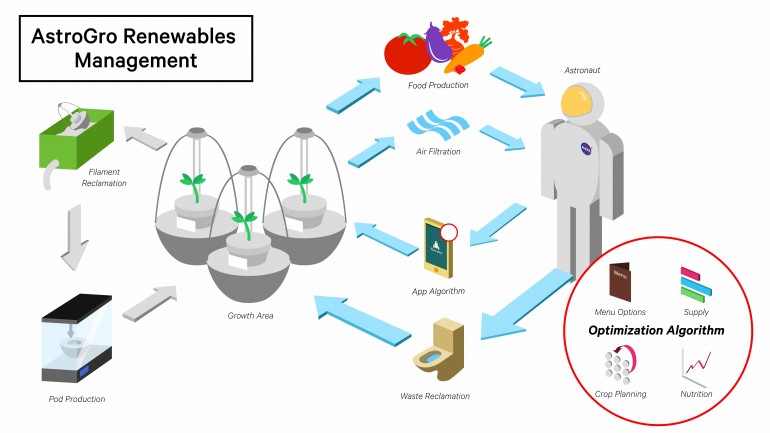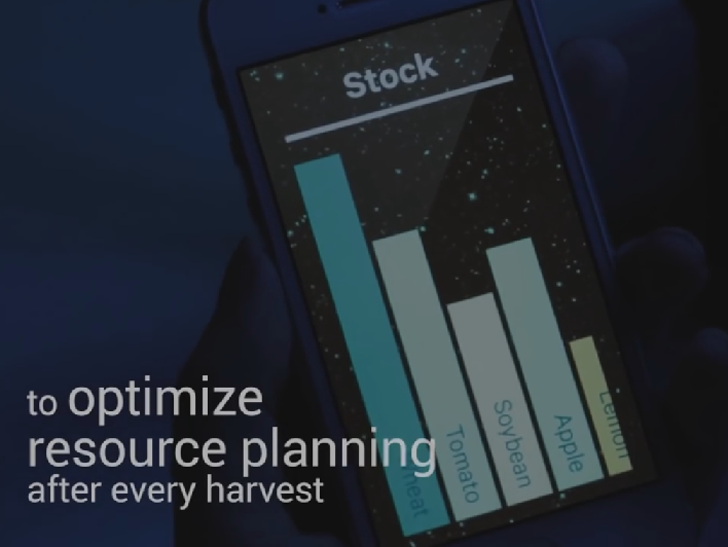Astronauts don’t exactly have the best food choices in space. Albeit, it has improved over the years from tiny cubes, freeze-dried powders, and oozy liquids to include almost anything that we eat on earth that can be reconstituted, re-hydrated, irradiated or packaged for space. Today, they can have beef steak, salmon, shrimp cocktail, coffee and tea, so it’s all good!
But it’s still not fresh food and it still has to be physically delivered from Earth to space. This very issue was addressed by NASA innovation incubator, the International Space Apps program, in their “Print your own Space Food” challenge. The winning entry would be the one that best took advantage of the possibilities of additive manufacturing to solve food problems in space.
The winning entry was AstroGro took a unique approach to the challenge. Instead of looking into 3D printing edible materials or recycling them, the CalTech students behind the project decided to use already existing 3D printers in space to 3D print AI-enabled, recyclable pods to organically grow food.
The idea is that, via the printed pods, food can be grown in an artificial environment, eliminating the need to transport food to space stations or planets. This reduces precious weight in a space flight and also enables astronauts to decide what they want to grow since the environment can be controlled for a variety of plants. With a renewable source, living in space can be sustained for longer. The filaments that the pods are made of can also be recycled, saving on additional build material.
Described by its creators in a nutshell, “AstroGro is a 3D printed pod that is integrated with artificial intelligence (AI) to organically grow fresh food, which will enable sustainable life. With 3D printed pods, the farming ecosphere is modular and food growth can be scaled. Using AI, conditions for plant growth is optimized to adapt to changing conditions, and multiple pods are managed under one system, or ‘brain’. Renewable and reusable, air is filtered by plants, waste is recycled for soil using greywater and night soil, and filament is reused for new pods. Anyone – an astronaut, spouse, or child untrained in horticulture – can grow fresh crops.”
How does the pod do this? It uses a remarkable system of sensors and actuators to optimize plant growth and control variables like temperature, hydration, lighting, and artificial gravity. An app that essentially controls and monitors the growth of a plant!
A transmit-and-receive antenna passing through the plant foliage pulses radio frequencies at 2.45GHz to measure plant growth. A pulsing microwave antenna is part of a heating and cooling system that uses dielectric heating to heat the plant’s water molecules. Along with sensors for feedback, this creates a efficient temperature control system. Light and dark cycles are controlled by an automated LED lighting system that responds to ambient light. A hydration system optimizes wet and dry cycles for the plant using impedance sensors in the soil and a pump. Artificial gravity is induced by setting up the pods on rotating hexagonal wheels that create a centrifugal force. Astronauts can also measure the nutrients in the plant to decide what they want to grow for what they need in their diet.
Basically the plants, housed in the 3D printed pods, will have an artificial, but complete, mini-environment that is pretty much similar to or better than what they would have on Earth. The pods can also be rebuilt and redesigned if needed by simply reusing filament from melted pods and tweaking the design using software. No need to send physical materials or tools since recycling and 3D printing create a closed system in space itself.
The AstroGro pod is really an efficient automated and sustainable micro-farm that makes the maximum use of limited resources to grow food. Although conceived for space, it would have applications on Earth, as well, where localized farming and improved techniques such as this would go a long way to solving our food problems on this planet, too. Maybe the next time you’re hungry, consider 3D printing yourself a pod!





